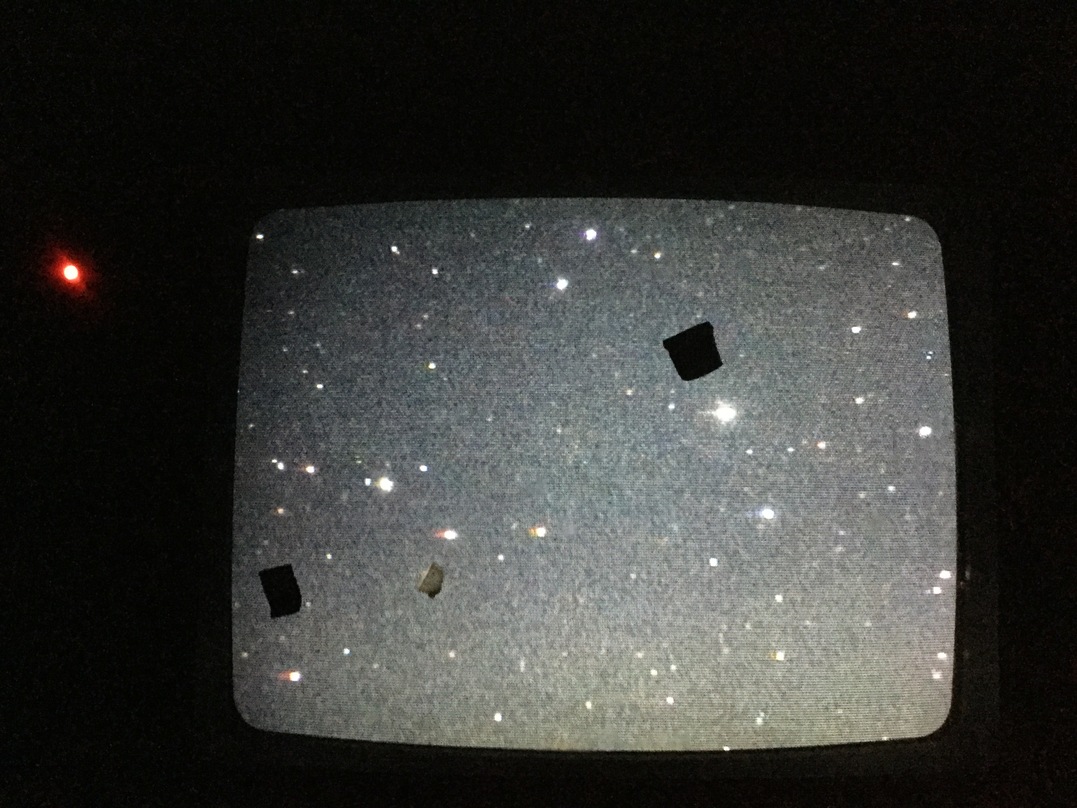
On the night of Nov 05/06, 2021, under good conditions, I acquired images of the eclipsing binary system V445 Cas as part of a capstone project. This _almost_ completes the binary's phase coverage.
Conditions were good. The camera rotated slightly over the course of the run (which I'd seen in another night of V445 Cas data), so I wrote a script to de-rotate the positions of the stars and facilitate photometric reductions.
The main setup was:
Notes from the night:
The object is located at
RA = 00:31:39.65 Dec = +53:13:00.3 (J2000)
A chart of the field is shown below. The size of the chart is about 31 x 26 arcminutes.

I've marked the location of several comparison stars as well. The bright star P is the ninth-magnitude HD 2826.
I'll use star "A" to shift my instrumental magnitudes to the B and V-band scales (and pretend that tonight's R-band images have the same V-band calibation)
I took a photo of the finder TV's screen when pointing to this target; this could be a useful reference for the future:

The sky value shows very little clouds, but see zeropoint graph below.

The FWHM graph below shows that my adjustments to the focus position didn't help.

Using aperture photometry with a radius of 7 pixels in B and V filters (binned 2x2, each pixel is 1.24 arcsec, so a radius of 8.7 arcsec), I measured the instrumental magnitudes of a number of reference stars and the target. Following the procedures outlined by Kent Honeycutt's article on inhomogeneous ensemble photometry, I used all stars available in each image to define a reference frame, and measured each star against this frame.
Sigma-vs-mag plots show that the floor was about 0.003 mag -- very nice!

The change in zeropoint shows a brief period of light clouds.

Last modified 11/17/2021 by MWR.